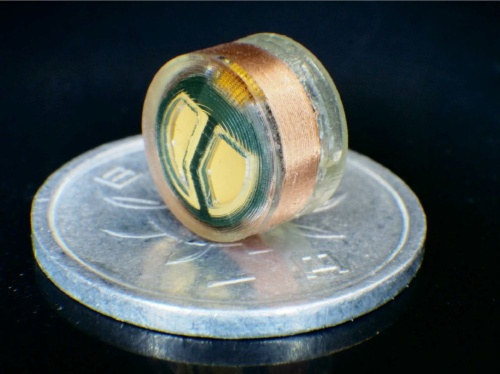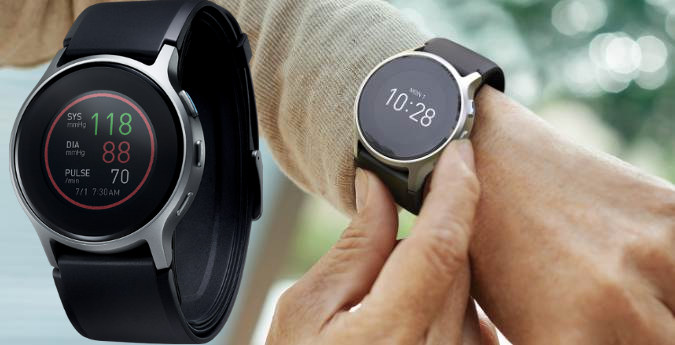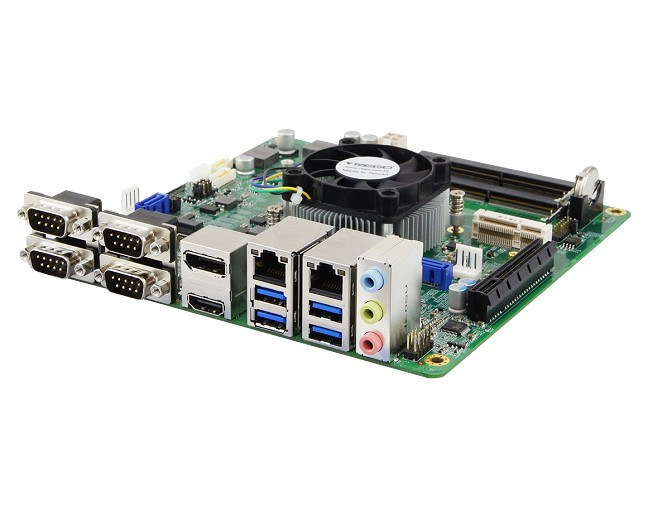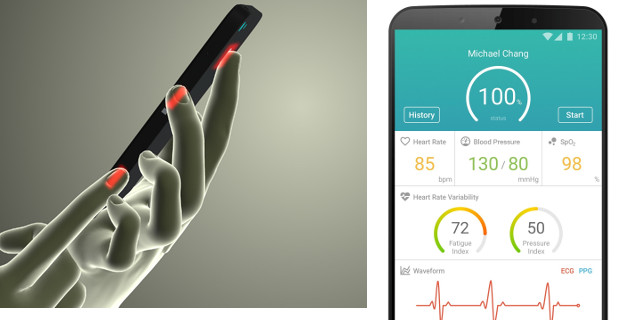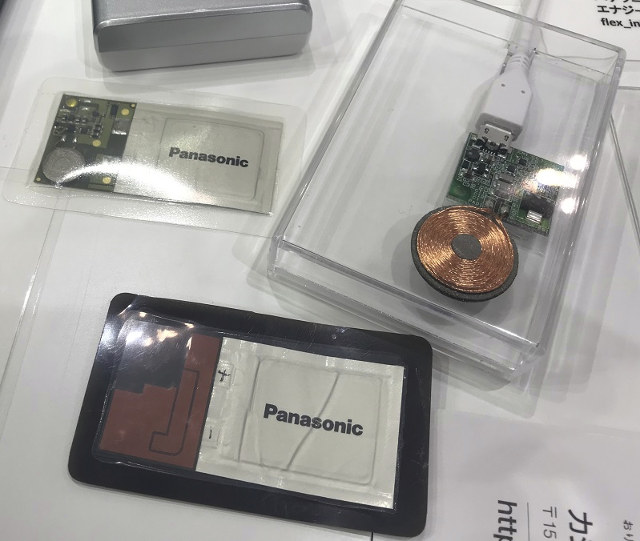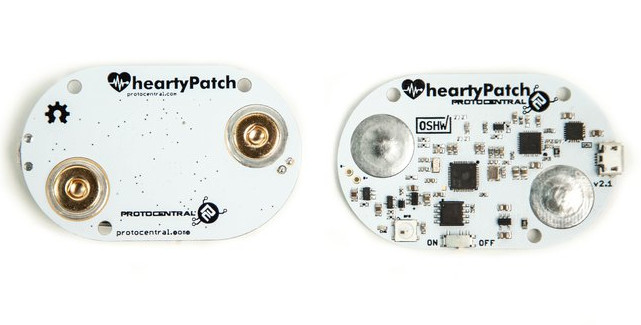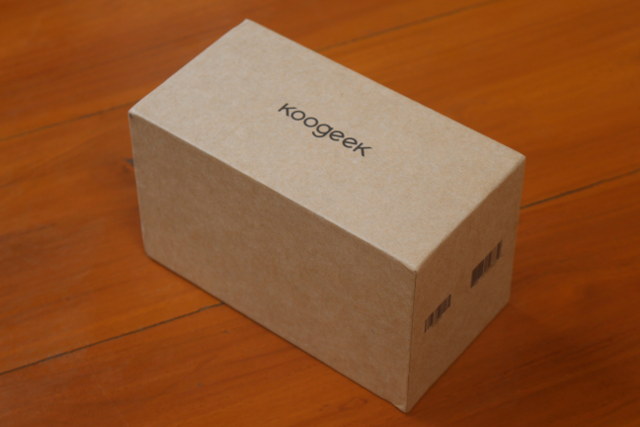Having just written about a thermometer board for home automation, I’ll stay on the temperature measurement topic, as I’ve found another thermometer that targets the medical field instead. Body temperature measurement at my local hospital is done under the armpit, which does the job in most cases, but more accurate temperature measurement of “deep body temperature” is normally achieved through rectal temperature measurement which is not as practical and comfortable for most people. Daily measurements of deep body temperature can apparently allow physicians to better understand “biological clocks”. In practical terms, it means doctors would be able to know ovulation cycles, measure the fatigue degrees of athletes, and even prevent heat strokes and hypothermia. Seeing the impractically in the conventional method, Nakamura Lab at Tohoku University developed a “swallowable thermometer” for this purpose. The swallowable sensor measures just 9.16mm in diameter, is allegedly perfectly safe to the human body, and […]
Omron HeartGuide Wearable Blood Pressure Monitor is Finally Available
Way back at CES 2016, Omron showcased Project Zero BP6000 wearable blood pressure monitor that was meant to be an FDA approved blood pressure monitor fitting into a watch form factor and starting to sell for $200 at the end of 2016. But the device was not particularly eye-pleasing and FDA approval is really hard, so they unveiled the thinner and prettier Project Zero 2.0 model the next year at CES 2017 with the goal of releasing the device sometimes in 2018 for $300. The good is that the product – now called HeartGuide – will up for pre-order, and slated to ship in January 2019. Sadly, the cost has gone way up since it now sells for $499, and will only ship to a US address. HeartGuide (BP8000-M) wearable blood pressure monitor technical specifications: Display – Transflective memory-in-pixel LCD Memory – Blood pressure measurement up to 100 times, activity […]
iBASE Introduces MI988 Ryzen Embedded V1000 Mini-ITX Motherboard
iBASE has recently announced the MI988 Mini-ITX motherboard based on the latest AMD Ryzen Embedded V1000 processor family. The motherboard is equipped with two DDR4-2666 SO-DIMM slots that support up to 32GB ECC memory, M.2 NVMEe storage (NVMe), two Gigabit Ethernet ports, and various display options. iBASE MI988 motherboard specifications: SoC – AMD Ryzen Embedded V1000 processor with AMD Radeon Vega GPU System Memory – 2x DDR4-2666 SO-DIMM, supports ECC, up to 32GB Storage – 1x M.2 SSD (NVMe), 2x SATA III Display Interfaces 1x HDMI 2.0a, 1x DisplayPort 1.4 1x eDP or 1x 24-bit dual channel LVDS Audio – Built-in HD audio w/ALC662 codec for 5.1 channel; 3x 3.5mm audio jacks Connectivity – 2x RJ45 Gigabit Ethernet connectors via 2x Intel I211AT USB – 2x USB 3.1 Gen2 (10Gbps) on board, 2x USB 3.1 Gen1 (5Gbps) on board Serial – 2x RS232/422/485 (Jumperless selection), 4x RS232 Expansion Slots 1x […]
Embedded Systems Conference 2018 Schedule – IoT, Security, Artificial Intelligence, and More
The Embedded Systems Conference takes place each year in Boston, US in April or May. This year, the event will occur on April 18-19, and the organizers have published the schedule with 7 tracks: Advanced Technologies, Center Stage (free), Embedded Hardware Design & Verification, Embedded Software Design & Verification, IoT and Connected Devices, Keynotes (free) and Special Event (free). Even if you can’t attend, it’s always useful to have a look at the schedule to learn about potential industry developments. So I’ve made my own virtual schedule with some of the sessions I found relevant to this blog. Wednesday, April 18 8:00 – 10:00 – An Introduction to RTOS by Jean Labrosse (Software Architect, Silicon Labs) This tutorial will help you understand what RTOSs are and how they work so that you can make better use of their features. The class will explain what an RTOS is and why you […]
Mediatek Unveils Sensio MT6381 6-in-1 Biosensor Module for Smartphones
Nearly exactly two years ago, Samsung unveiled S3FBP5A bio-processor for fitness tracking wearables with five analog frontends measuring PPG, ECG,skin temperature, BIA, and GSR data, and that is (or was?) expected in the company’s S-Patch3 health tracker. Mediatek has now come up with something with similar functionalities, but instead of being a standalone bio-processor for wearables, Sensio MT6381 biosensor module is designed as a companion chip for smartphones, and capable for delivering 6 different types of heart and fitness data in about 60 seconds. MediaTek Sensio key features and specifications: Integrated R and IR LEDs for reflective PPG measurement + 1-channel ECG analog front-end Health Data Heart-rate in heart beats per minute Heart-Rate Variability (variation in the time between heartbeats). Blood Pressure Trends Peripheral Oxygen Saturation (SpO2) – amount of oxygen in the blood. Electrocardiography (ECG) – electrical activity of the heart over a period of time Photoplethysmography (PPG) – […]
Panasonic Showcases Flexible Batteries with Wireless Charging System
Flexible batteries such as PowerStream lithium polymer batteries can be integrated into new application such as smartcards, and could help wearables have longer battery life by adding batteries into clothes, wristbands or chestbands for example. You’d still need to charge them however, and in some cases adding a USB port (micro USB or type C) may negate the benefit of having a thin flexible battery, but Panasonic has a solution as the company added wireless charging capability to their flexible batteries. The solutions showcased at Ceatec Japan 2017 on October 3-6, 2017 were flexible lithium-ion rechargeable batteries with 0.45mm thickness, and 18, 42 and 65mAh capacity. Battery voltage is 3.8V, charging voltage 4.35V, and the batteries can be bend up to a radius of 25 mm, and twisted by up 25°. Such batteries are meant to be attached to human body and clothes for medical and health management applications, or […]
HeartyPatch is an Open Source Wireless ECG Patch Powered by ESP32 WiSoC (Crowdfunding)
Smart health gadgets will soon have a bigger part to play in our lives, especially for health monitoring. It mainly started with fitness trackers, but now we are starting to see connected devices such as blood pressure monitors, including the upcoming watch like Omron HeartVue, thermometer, scales, vital sign monitoring systems, certified medical SBC‘s to allow engineers to developer their own medical applications, and even open source surgical robots. HeartPatch is one of those medical board that specifically aims at measuring ECG data, and sent it over Bluetooth or WiFi thanks to Espressif ESP32 WiSoC. HeartPatch specifications: SoC – Espressif Systems ESP32 dual core Tensilica LX6 processor with Wi-Fi/Bluetooth ECG Chip – Maxim MAX30003 analog front-end USB – 1x micro USB connector for programming, data, power, and battery charging Debugging – USB-UART bridge based on CP2104 Misc – Onboard Snap-on Buttons for disposable electrode pads, RGB LED, Battery – 450 […]
Review of Koogeek BP2 Bluetooth Blood Pressure Monitor
Koogeek BP2 is an FDA approved smart blood pressure monitor that connects over Bluetooth to your Android or iOS smartphone, or WiFi to the cloud. The company sent me a sample for evaluation, so let’s get started right away. Koogeek BP2 Unboxing The device is sent in a cardboard package with Koogeek brand… and some more derails about the specifications on the bottom of the package. I asked the company to confirm about FDA approval, and they told me to look for K134029 on the FDA website, which lead me to this document testing Shenzhen Belter Health Management and Analysis ePA-46B, and comparing it to the results of Omron HEM-7200-Z (BP742) with the conclusion being that: The Belter Blood pressure meter (ePA-46B) is substantially equivalent to the predicate devices. Koogeek BP2 is the same as Belter ePA-46B, but just rebranded, and with a different mobile app. In the package will find […]


